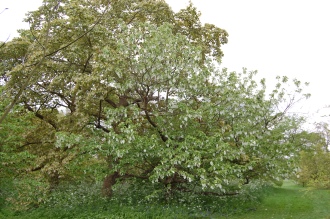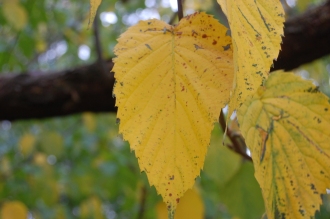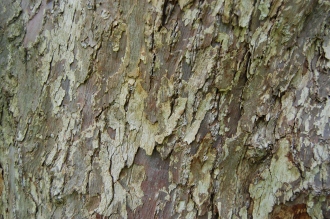Position: Full sun to light shade
Flowering period: Late spring
Soil: Moist, well drained
Eventual Height: 20m
Eventual Spread: 20m
Hardiness: 6a, 6b, 7a, 7b, 8a, 8b, 9a
Family: Cornaceae
Davidia involucrata is a moderately fast growing deciduous tree with a spreading habit. Its mid green leaves are cordate with serrate margins, up to 15cm long and 12cm broad. Its red/ brown and silver bark peels off in large flake. Its red flowers appear in tight clusters and are up to 2cm across. Each flower cluster has a pair of pendulous white bracts, one large one small, the larger is up to 16cm long. Its fruit is a hard nut which is up to 3cm long.
Davidia involucrata, commonly known as the Handkerchief Tree, Ghost Tree or Dove Tree, is native to south central and south west China. In its native habitat it grows in mixed forests Davidia involucrata is the only member of this genus.
The etymological root of the binomial name Davidia is named after Father Armand David (1826 – 1900), a french missionary and naturalist. Involucrata is derived from the Latin involucrum meaning ‘wrap’, in reference to its bracts.
The landscape architect may find Davidia involucrata useful as a medium sized parkland tree with dramatic flowers and bracts.
Ecologically, Davidia involucrata flowers are attractive to pollinating insects.
The Royal Horticultural Society has given Davidia involucrata their prestigious Award of Garden Merit in 1993.
Davidia involucrata prefers moist, fertile, well-drained soils. It tolerates most pH of soil.
Davidia involucrata requires little maintenance.









Are these trees fast growing? And will it grow in Bolinas, CA? Love your site!
I wouldn’t say fast but they grow at a reasonable pace. I would suggest they are on the edge of their comfort zone in Bolinas, CA. You could try to grow it in the dappled shade of other trees, you might be lucky. Good luck.